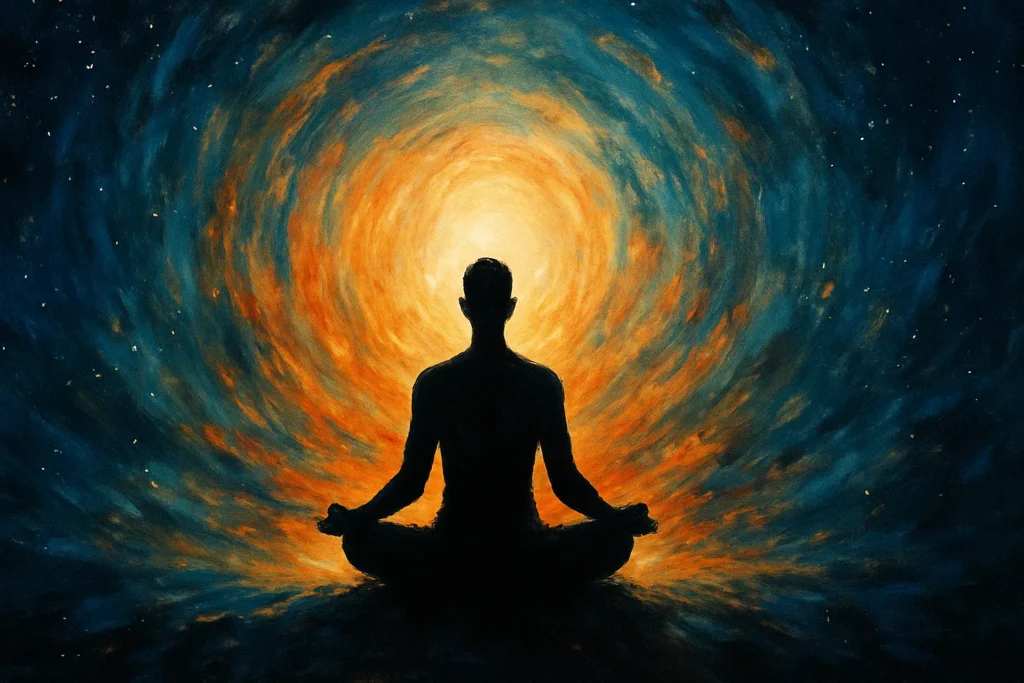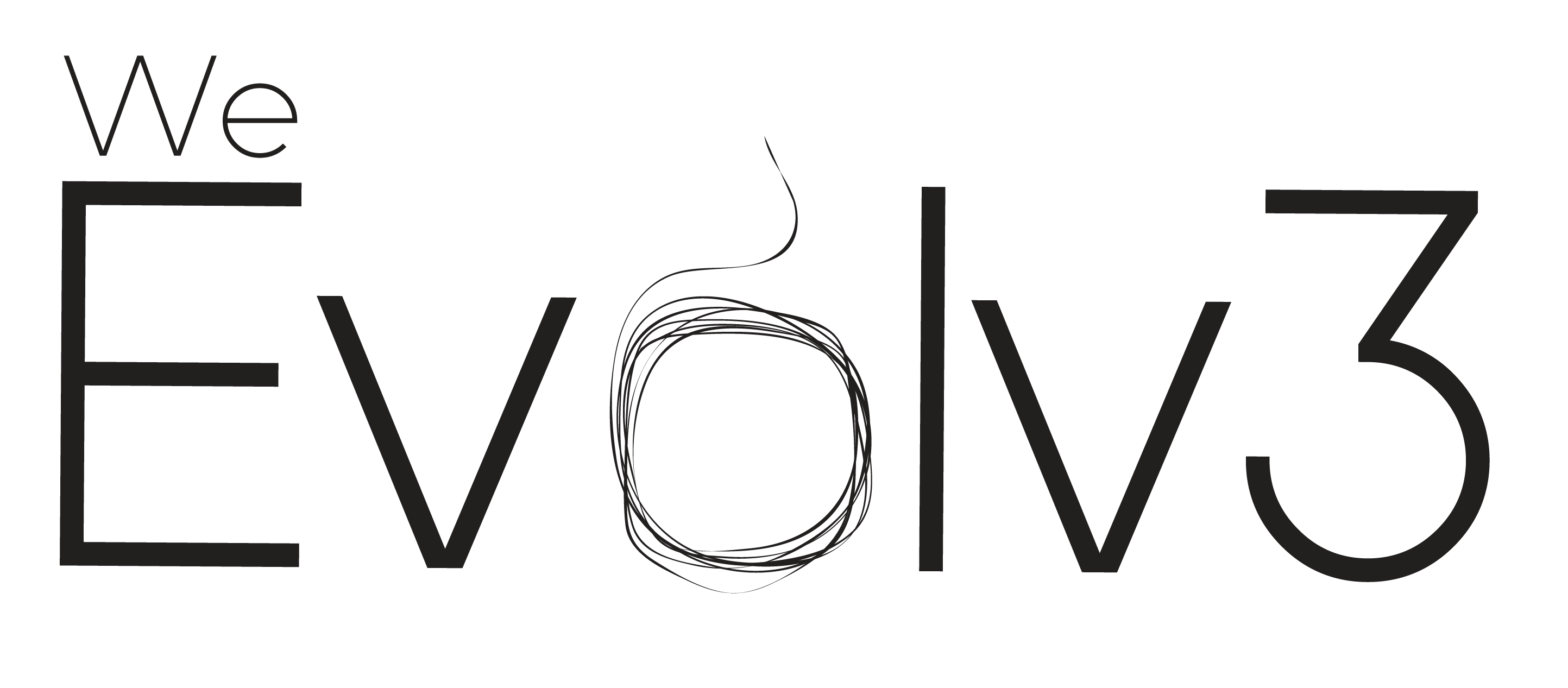
God, we talk a lot about “waking up” these days, don’t we?
Meditation apps. Instagram quotes. Everyone posting about being “on their journey.” And yeah, I’ve been part of that world too. I’ve done the breathwork, the shadow work, the stillness practices – all of it. It’s beautiful stuff, really. But it can also trap us if we’re not careful.
Because here’s the truth…
Most people think they’ve woken up when all they’ve really done is hit stage one. They’ve exited the Matrix – but they’re still just watching the screen from the lobby.
My Two-Decade Journey: Still Unfolding
I did my first meditation retreat back in 2003. Far out, that’s over 20 years ago now. I’ve been meditating ever since – some years more consistently than others – but the pull to go deeper has never quite left me.
During those early years, I thought I was making progress. Well, I suppose I was, in a way. I carried these meditation insights back into my life. I “cracked the code” with my newfound ability to observe my emotions rather than be consumed by them. When anger bubbled up during a difficult conversation, I could label it…”Just anger happening.” When anxiety flooded my system before a presentation, I could watch it… “Just fear showing up.” That sort of thing.
But something was missing. I was still secretly waiting for these emotions to dissolve. I was still the meditator trying to manage my experience.
Finding the Words: How Two Mindfulness Experts Articulated My Experience
So anyway, I was listening to Dan Harris interview Sam Harris (no relation) the other day, and something clicked in a way that was properly satisfying. For those who don’t know these blokes – Dan Harris is the ABC news anchor who had a panic attack on live telly and went on to write “10% Happier,” while Sam Harris is the neuroscientist and philosopher behind the Waking Up app.
The thing is, I’ve been experiencing these shifts in awareness for years during my practice… those moments when the “watcher” dissolves and there’s just… experience. But I’ve always struggled to put it into words. Then Sam started talking about dualistic versus non-dualistic mindfulness, and I nearly spilled my almond milk sticky chai tea.
“Most meditation instructions,” Sam explained, “actually reinforce the sense of a meditator who’s meditating. The one who’s trying to concentrate. The one who’s failing or succeeding.”
That was it. The language I’d been searching for to describe what I’d felt on the cushion for ages during my Vipassana meditation (a mindfulness technique focused on observing the present moment without judgment).
There are levels to waking up.
And too many people stop at level one. I did for years. Maybe you have too?
Dualistic Mindfulness: The First Awakening
Let’s start here.
You get into mindfulness. You learn to observe your anger instead of being consumed by it. You notice how your thoughts aren’t really you. You start seeing how your internal state is shaping your experience – and that alone is massive, right?
It’s the first time you stop being completely hijacked by your mind. And it feels like a superpower.
You notice your thoughts, sensations, the heat in your chest, and your racing heart… and instead of spiralling into another meltdown, you breathe. You watch. You name it. You gain a bit of space.
That’s powerful stuff.
But if you’re like most people (myself included, once), you think that’s it. That you’ve bloody arrived.
Spoiler alert: You haven’t.
The Hidden Trap: Mindfulness with an Agenda
As Sam Harris put it – most of what we call mindfulness is still absolutely drenched in aversion.
You’re not just observing your anxiety. You’re waiting for the feeling to go away. You’re not sitting with discomfort. You’re trying to feel better. You’re not breathing through sadness. You’re hoping it’ll pass quickly so you can get back to “you.”
I do this all the time. Still.
Let me ruin your day (just a little)…
That quiet need for things to change is still resistance. It’s still ego, still agenda, still trying to control everything – just with a meditation cushion underneath it. Same old story, fancier packaging.
And while dualistic mindfulness is a huge leap forward from total unconsciousness (I’m not knocking it!), it’s still bound to that old reflex that something about this moment needs fixing.
Have you noticed this in your own practice? That subtle evaluation system running in the background, grading your meditation as “good” when you feel peaceful and “bad” when your mind won’t settle. Mine does it constantly. Maddening, really.
Beyond the Observer: Non-Duality Explained
Non-dual awareness doesn’t fight the moment.
It dissolves the fighter. Gets rid of the middleman entirely. Bypasses the bouncer at the door. And lets awareness walk straight in – no ID required.
There’s no “me” trying to fix the moment anymore. There’s just… this. A swirl of sensations. A field of awareness. And no one at the centre clinging to a preferred outcome.
It’s not about calming your anxiety. It’s about realising there’s no separate self needing to be calmed in the first place. Bit of a mind-bender, that one.
This isn’t a bliss hack or some spiritual productivity tool. This is the raw, unfiltered experience of consciousness without a puppet master.
And that? That’s freedom. The real deal.
Common Misconceptions About Non-Duality
Loads of people confuse non-dual awareness with:
Spiritual bypassing: “I’m so enlightened that I don’t feel emotions anymore.” Rubbish… non-duality allows emotions to flow more freely, not less. When I glimpse this state, I often find myself feeling more, not less.
Dissociation: True non-dual awareness isn’t about disconnecting from experience but fully inhabiting it without the conceptual overlay of a separate self. It’s more like falling into life than stepping back from it.
A permanent state: Non-dual awareness tends to come in glimpses at first. At least it has for me. The path isn’t about forcing these glimpses but recognising the nature of awareness that’s always already here. Even when we’re missing it.
Practical Steps Toward Non-Dual Awareness
If you’re curious about moving beyond dualistic mindfulness, here are four practices that helped me. They might work for you too. Or not. We’re all wired differently, aren’t we?
- The “Who Am I?” inquiry: When you’re sitting in meditation and notice yourself observing thoughts, gently turn attention toward the observer itself. Ask: “Who or what is aware of this experience?” Don’t answer conceptually – just rest in the questioning. This one’s a bit tricky at first. Took me ages to stop intellectualising it.
- Drop the meditation “project”: For one session, abandon all techniques. Don’t try to focus on anything. Don’t try to achieve any state. Just sit and allow whatever arises to come and go, without managing the experience at all. Sounds easy. It’s not. Your mind will try to sneak in through the back door, I promise you.
- Glimpse practices: Throughout your day, take 10-second breaks to notice the space in which all experience is happening. Not just the contents of consciousness, but consciousness itself. I do this while waiting for the kettle to boil, sitting at traffic lights, that sort of thing. Little moments where you can just… drop in.
- Vedic Meditation (the mantra as a vehicle): This practice doesn’t involve focusing or controlling the mind – it’s about letting go. You silently repeat a mantra (a meaningless sound) and allow it to gently fade. Over time, the mantra carries you inward, past the noise of thoughts, beyond body, beyond mind – into the unmanifest field. Pure consciousness. The source of all things. Call it the Unified Field, the Self, the Divine – it doesn’t matter. What matters is the experience. A glimpse of who you are when there’s nothing left to hold onto.
Why This Matters Beyond the Cushion
This distinction isn’t just philosophical wankery – it transforms everyday life:
When you operate from dualistic mindfulness, you’re still fundamentally separate from your experience. You’ve created space, yeah, but you’re watching life happen to you. There’s still this sense of “me over here” and “life over there.”
From non-dual awareness, there’s no division between you and life. The traffic jam isn’t happening to you; it’s just happening. The difficult conversation isn’t yours to manage; it’s an unfolding of consciousness itself.
This might sound a bit abstract, but in practice, it’s deeply practical. Relationships improve because there’s no separate self defending its territory all the bloody time. Creativity flows because there’s no controller limiting what can emerge. Suffering lessens because there’s no one clinging to how things “should” be.
I’ve found that on days when glimpses of non-duality are more available (and they’re not always, mind you), I move through the world with more grace, less reactivity, and a profound sense of connectedness that dualistic mindfulness never quite delivered. My partner would probably tell you I’m less of a pain on those days too.
Final Thought: The Invitation
If you’re walking this path – don’t stop at the first mountain peak.
Yes, the view is great. Yes, you’ve come far. But if you feel the pull toward something deeper – follow it. I am.
Let your breath be your guide. Let stillness be your map. Let curiosity melt your agenda.
Because beyond the duality of self and other, of seeker and sought, of breath and breather…
There’s just presence.
And when you touch it – even for a moment – you’ll know…This is what waking up really feels like.
This week, I’m heading into another meditation retreat (one more spot left, join me). Not to chase bliss, not to check some spiritual box – but to continue remembering what’s already true.
I’m not going in with expectations. Just an openness to let nature, my soul, the quiet intelligence behind it all – take the lead. Not my mind. Not my stories. None of that.
Excited isn’t the word. Curious feels closer. Receptive, maybe. Ready to dissolve a little more of what’s false and sit more fully in what’s real.
Because that’s the path.
A slow burning away… of everything that isn’t presence.
If this resonates, share it with someone else who’s climbing too. We need more of us fumbling toward this together.
And as always – breathe deep, drop in, and let’s evolve together. One moment at a time.
What’s been your experience with mindfulness? Have you noticed the subtle “fixing” agenda in your practice? I’d love to hear about it in the comments. The good, the bad, the messy – all of it.
Big Love,
Dino
